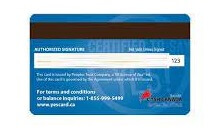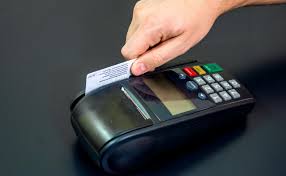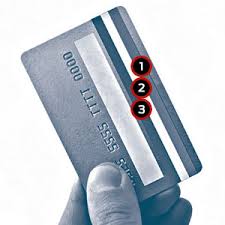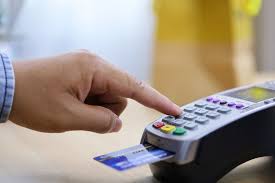Magnetic Card
A magnetic card is also known as a magnetic stripe card. It is a card that has data embedded in an iron-based magnetic strip. This is done by making modifications to the magnetism of the particles of the strip. This technology is generally used for making unique identity cards. They are used for making identity cards, debit and credit cards, or transportation tickets. These cards are unique to the cardholder. The data can be read from the card by swiping them in a magnetic reading head. Certain organizations use magnetic cards embedded with an RFID tag or a microchip that is used as an access card in the organization. This allows the organization to check the access of employees on the premises. The user uses it to perform electronic transactions. The transaction can be monetary, or it could be used for exchanging data or granting access to the users to a physical space. The stripe contains embedded information that can uniquely identify a user. These cards are currently being used in several fields; they are used in driver's licenses, hotel room cards, and user authentication cards. Magnetic Strip CardThese cards are also called magstripe or swipe cards that contain information about the user or the resources required to perform the card's function. Generally, the cardholder's name or identification number and the issuing authority are also mentioned on the card. It may also contain additional information, such as the issue's date or expiry date. The transaction can be monetary or exchanging the data to allow the employee to enter the premise of a building. Since the information is stored in a magnetic format in the strip line of the magnetic card, if the user wants to read the information from the card, they have to swipe it through the reading head. The magnetic reader decodes the data embedded in the stripe line. It authorizes the transaction. Sometimes an additional layer of security is added to make the transaction safer. Structure of Magnetic Stripe Card
The Magnetic cards are generally 2 to 3 inches and are made from either plastic or durable paper. The magnetic strip is located on the back side of the magnetic card. The data is embedded in the iron particles in the plastic film. When the card is swept through an electronic reader, the decoder decodes the embedded data. It determines whether to approve or deny the transaction request or whether access will be provided. Components of Magnetic Stripe Card
In a magnetic stripe card, generally, there are three stacks placed horizontally over each other. All tracks are extended along the width of the magnetic card. The data is embedded on each track, but each track may contain different information and play a different role in the transaction. In credit cards, the first two tracks are responsible for storing the details of the credit card. The credit card may contain additional data such as the cardholder's name, account number to which the card is issued, verification code, and date of expiry. The third layer does not contain much information. It might contain the country code or the currency code for the card. Important points regarding Magnetic Card
Hacking Magnetic Stripe Card
Replacing the Magnetic Stripe Card
Next TopicGeneral webcam troubleshooting
|
 For Videos Join Our Youtube Channel: Join Now
For Videos Join Our Youtube Channel: Join Now
Feedback
- Send your Feedback to [email protected]
Help Others, Please Share










